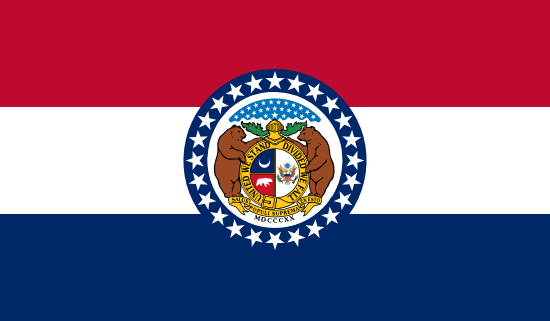
Missouri
- Statehood Year:
- 1821
- Capital:
- Jefferson City
- Largest Cities:
- Kansas City, St. Louis, Springfield
- Abbreviation:
- MO
Missouri is a state in the Midwest region of the United States, known for the Ozarks, Missouri River, and Gateway Arch. It has a population of 6,282,890, making it the 19th most populated state in the country. The capital city is Jefferson City. Missouri has a diverse economy with aerospace and agricultural strength.